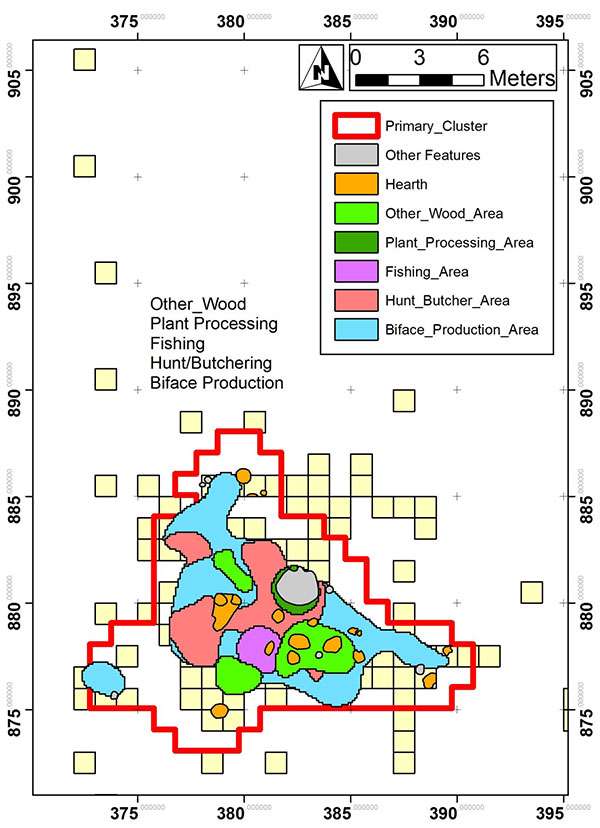Mapping material culture and features at the site allows us to reconstruct where people conducted their daily activities during each period of site use. Analysis of Transitional period artifacts and tools showed that there is one primary location of activity, centered on several hearths and other features. Artifacts demonstrate that occupants made bifacial tools (e.g., projectile points) in preparation for hunting/butchering tasks and for processing plants. The hand-full of net weights (stones used to weigh down fishing nets in the river) indicate that some fishing took place.
Analysis showed three locations of activity for the Middle Woodland period. The largest was at the center of the site, which overlapped several large and FCR-rich roasting platforms and hearths. The two smaller clusters are to the north. Site activities included production of bifacial tools, along with a smaller amount of hunting/butchering and miscellaneous tasks. Fishing and plant-processing tasks were not the primary tasks engaged in by site occupants during this period of site use.
As with the Transitional period, the Late Woodland period had only one center of activity. The artifact assemblage contained more bifaces and scrapers and a greater tool diversity than the other periods of site use. Activities likely focused on bifacial tool production, hunting/butchering, and fishing, with a lighter focus on plant-processing and other miscellaneous tasks.
